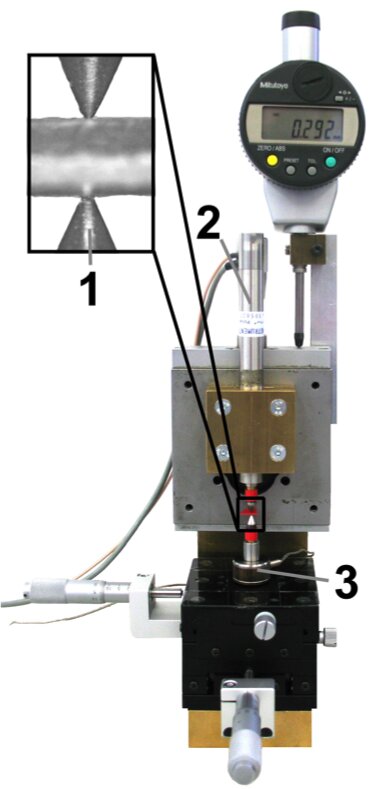Double indentation technique
|
|
The elastic modulus is an important parameter for realistic (FE) modeling. It is not straightforward to obtain this modulus for small and thin samples: compression and tensile tests need well-known geometry and boundary conditions while classic indentation tests need relatively thick pieces of material. Therefore we developed a new double indentation technique so material-properties of thin samples could be obtained (see figure below). In order to determine the elastic modulus, we use the indentation theory as proposed by Sneddon and correct it with a finite element calculated factor to compensate for the small thickness. In order to avoid material deformations at the contact zone between the sample bottom and the sample stage, we replace the sample stage by a second indentation needle. In this way the sample can be clamped between two identical needles and a virtual mirror plane is introduced. For a detailed description: |
